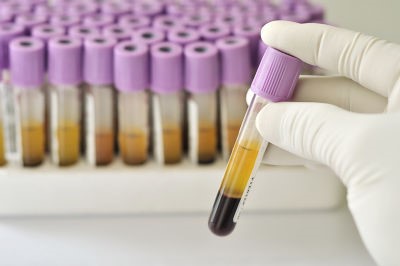ALT is a test that measures an enzyme called alanine aminotransaminase (ALT) or glutamic-pyruvic transaminase (GPT). This enzyme is made in the liver. It is released into the blood when liver tissues are damaged. The ALT test checks for and measures damage to the liver. It is also done to check medical treatments that may affect the liver. Here in our laboratory (animal health) we do it to diagnose animal hepatitis, cirrhosis, hemochromatosis, and their liver oriented problems. The test takes just a few minutes. A small amount of blood is used to conduct the test. From the collected samples, blood serum needs to be separated and then a small amount of serum sample is added with ALT testing buffer where L- Alanine, Sodium azide, 2-oxoglutarate, nicotinamide adenine dinucleotide (NADH) are present.
It is mixed well and incubated at 37˚C for 2 minutes. 2-oxoglutarate reacts with L-alanine in the presence of ALT to form L-glutamate plus pyruvate. The pyruvate is used in the indicator reaction for a kinetic determination of the reduced form of NADH consumption and form a brown colored complex, within this incubation period. Then, this brown colored complex’s intensity is measured at OD340nm with Humalyzer 3000. The reference value is variable for different animals. So we need to compare the resultant value with the reference value every time to determine for particular animals dysfunction




